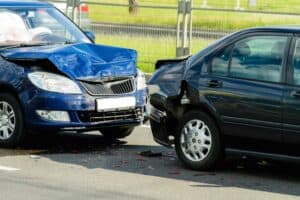Will My Insurance Cover my Auto Accident?
Whether you’re the victim or the culprit in an auto accident, chances are you want to know what expenses are covered by your insurance. Here’s what to expect.
First, you were in an auto accident. Now, you have to worry about the medical bills.
It’s a frightening situation, one that 2.35 million Americans face each year.
Keep reading to find out more about how insurance works in the event of a car accident and what the laws mean for your accident.
Insurance in an Auto Accident
Our San Diego personal injury attorneys have extensive knowledge in this area, but before we can determine whether your insurance will cover the costs of your accident, we must first discuss how insurance works.
There are two types of insurance you’ll be working with after a car accident: health insurance and auto insurance. First, we need to talk about deductibles.
How Do Deductibles Work?
A deductible is the predetermined amount that you pay for covered health services before your health insurance kicks in to cover the rest. Once this happens, you’ll only have to worry about copayments or coinsurance.
However, deductibles also apply to other forms of insurance, including auto insurance.
Many plans pay for certain services before the deductible is met, and many have separate deductibles for different services–a common health insurance example is prescription drugs. Our El Cajon Car Accident Attorneys are here to help.
If you’ve been hurt in a car accident, you’ll still have to pay the deductible before your insurance kicks in and pays the rest of the bill. Because the objective is to get you the finest care possible for your injuries, you won’t be expected to pay the deductible right away.
Afterward, though, you will get a bill detailing the costs you’re responsible for under the deductible. Accident lawyers will make sure that you’re reimbursed for healthcare costs if you end up filing a personal injury lawsuit. Hire an El Cajon Personal Injury Attorney that you can trust.
What Insurance Should You Use?

This brings us to our next question: what insurance should you use?
We mentioned earlier that you’re dealing with two types of insurance in an auto accident: car insurance and health insurance. Specifically, you’re dealing with personal injury protection insurance (PIP), which is a form of car insurance.
PIP is designed to cover the cost of treatment, rehabilitation, and lost wages directly resulting from a car accident. It’s required in 16 states: Michigan, Massachusetts, New Jersey, New York, Delaware, Rhode Island, Maryland, Connecticut, Minnesota, North Dakota, Oregon, Kentucky, Kansas, Arkansas, Florida, and Utah, as well as the District of Columbia.
In all the rest of the states, including California, PIP is optional.
In states that require PIP or MedPay, you’re required to use PIP or MedPay to the limits before you can start using your health insurance.
If you don’t have PIP, you can use your health insurance for all medical bills connected to an auto accident. This is often the best option, at least initially, because it can take some time to sort out a claim with the other driver’s insurance.
Whose Insurance Pays for an Auto Accident?
With this in mind, whose car insurance will end up paying in the event of a car accident?
Well, that depends on your state liability laws and, as a consequence of those laws, who was at fault.
Understanding State Liability Laws
We mentioned earlier that PIP is required in about 16 states. These are called no-fault states, which makes sense because PIP is also called no-fault insurance. The remaining states are fault states.
Whether the other person’s insurance will cover your costs after the accident depends on which state you live in. California is a fault state, but as a point of reference to understand what you’re dealing with, let’s break down no-fault as well.
No-Fault
The no-fault system comes from a reality that most people accept as true: the tort system (the lawsuit system) leads to long and expensive court battles over who was at fault and their degree of fault.
As such, policymakers in no-fault states decided to address that issue directly.
In no-fault states, a good driver doesn’t need to prove that another driver was at fault in the accident in order for their insurance to pick up the bills. The tradeoff is that the injured party cannot sue the other driver for pain and suffering, emotional distress, etc. thus resolving the issue of lengthy court battles.
This is for health insurance. In terms of damage to your car, you would handle a claim with your auto insurance the same way you would handle health insurance in a fault state.
Thresholds
Lawsuits for personal injury are permitted if they meet a certain threshold in a no-fault state. What that threshold constitutes varies widely based on the state in question.
There are two types of thresholds: monetary and verbal.
In monetary threshold states, medical expenses must exceed a certain set dollar amount.
In verbal threshold states, injuries must be relatively severe–such as significant loss of use of a body part, permanent disability, or disfigurement–or expressed as the length of disability, such as full disability over four months.
Fault
Then there are fault states like California.
In this system, insurance companies pay claims based on the degree of fault of each party. This can become a problem if you and your insurer don’t have the same interpretation of degree of fault.
If this occurs, you may need to file a suit for damages.
Three Types of Negligence and Fault Insurance Claims
This is done by determining negligence–basically, if you are negligent in an accident, then you are at fault.
California is a pure comparative negligence state. What this means is that drivers can recoup losses in proportion to their degree of fault in an accident. The obvious problem, of course, is that this can be highly subjective.
[/av_textblock]
Finding the Right Accident Attorney for You
This is where an auto accident attorney is invaluable to you.
If you were in an accident, take a look at these seven things you need to do on the scene. From there, take a look at our guide to filing a claim after an accident.
But remember: when you’re in a tough spot, nothing beats an experienced, dedicated attorney. Contact Us to get started with your free consultation.
Our San Diego personal injury attorneys have extensive knowledge in this area, but before we can determine whether your insurance will cover the costs of your accident, we must first discuss how insurance works.
Our san diego Location
San Diego Personal Injury Lawyer | Mova Law Group
3262 Rosecrans St, San Diego, CA 92110
(858) 333-4999
https://www.google.com/maps?cid=420244497883360927
Our El Cajon Location
San Diego Personal Injury Lawyer Mova Law Group
1283 E Main St #211, El Cajon, CA 92021
(619) 349-1589



